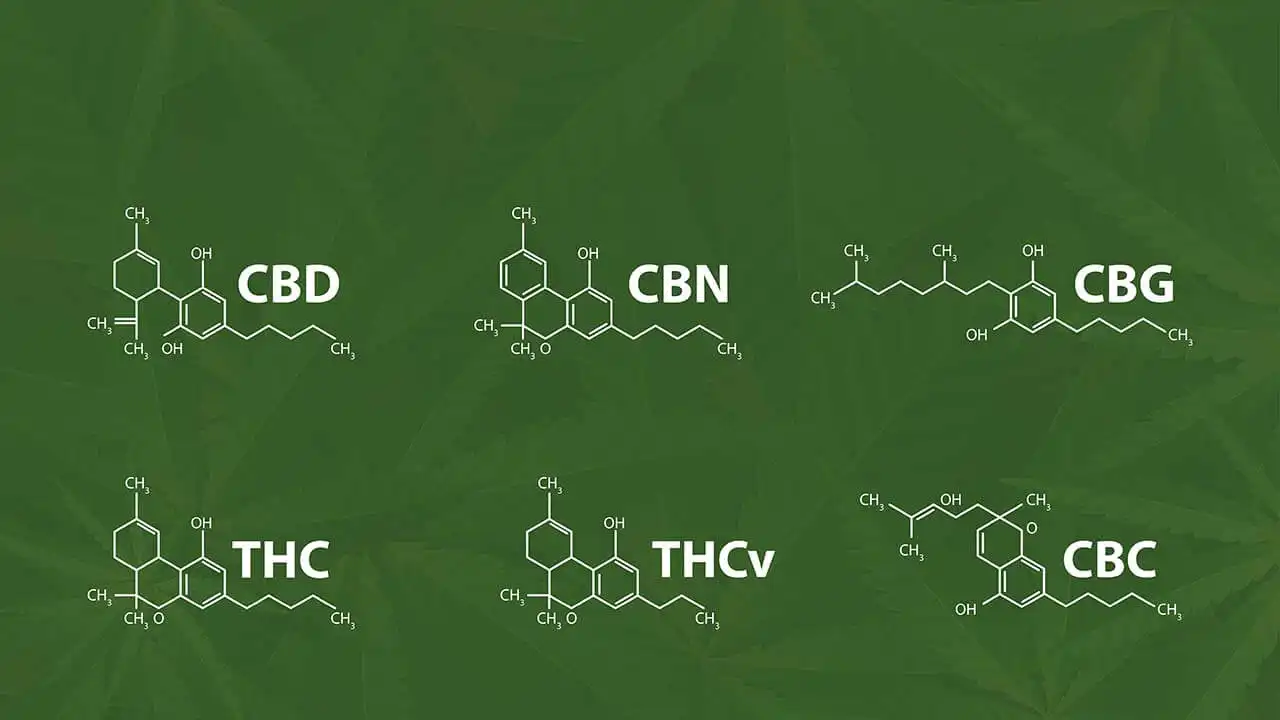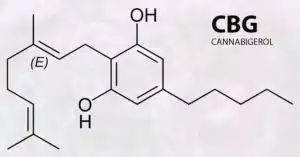Major cannabinoids such as THC and CBD in a cannabis plant draw attention away from the minor cannabinoids. A cannabis plant contains over 100 different cannabinoid compounds, which add to the overall profile of a strain. Minor cannabinoids are emerging as therapeutic boosters that can improve the wellness capabilities of cannabis products.
These lesser-known compounds, including CBG (Cannabigerol), CBN (Cannabinol), CBC (Cannabichromene), and THCV (Tetrahydrocannabivarin), can be very effective for adding unique benefits and effects. This article explores minor cannabinoids and their potential for targeted therapeutic applications.
Sections
ToggleWhat Are Minor Cannabinoids?
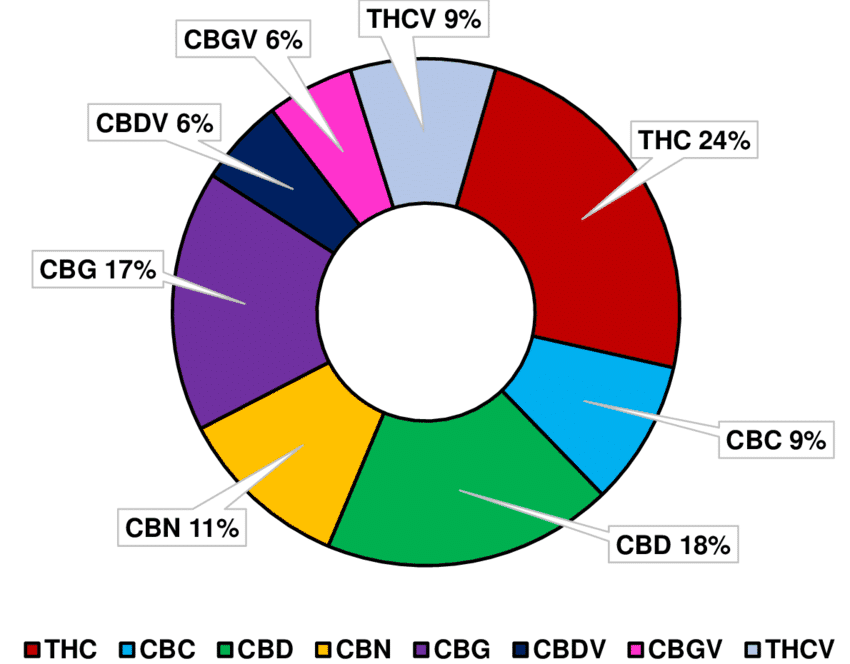
Minor cannabinoids are specialized chemical compounds that can interact with the body’s endocannabinoid system. This gives them therapeutic properties different from those of their major counterparts.
The key difference between major cannabinoids, such as CBD and THC, and minor cannabinoids is the abundance and research focus. Due to the higher concentration of major cannabinoids (up to 10-25% of the plant’s cannabinoid profile), their effects are widely studied.
Minor cannabinoids are called so because they are found in smaller concentrations (less than 1% of the plant’s total cannabinoid content).
How Do Minor Cannabinoids Work?
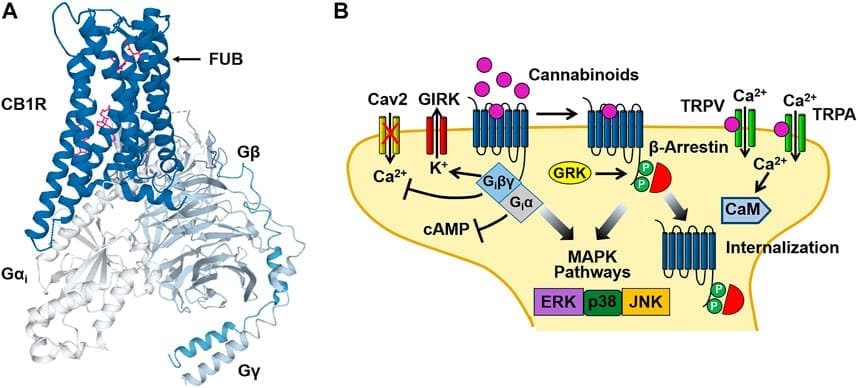
Minor cannabinoids like their major counterparts can interact with the body’s endocannabinoid system (ECS). ECS is a complex network of receptors that regulates various physiological processes.
Minor cannabinoid compounds primarily bind to two main receptor types:
- CB1 receptors: Predominantly found in the brain and central nervous system, these receptors affect functions like mood, memory, and pain perception.
- CB2 receptors: Primarily located in immune cells throughout the body, these receptors regulate inflammation, immune response, and peripheral pain signals.
Types of Minor Cannabinoids and Their Potential Benefits
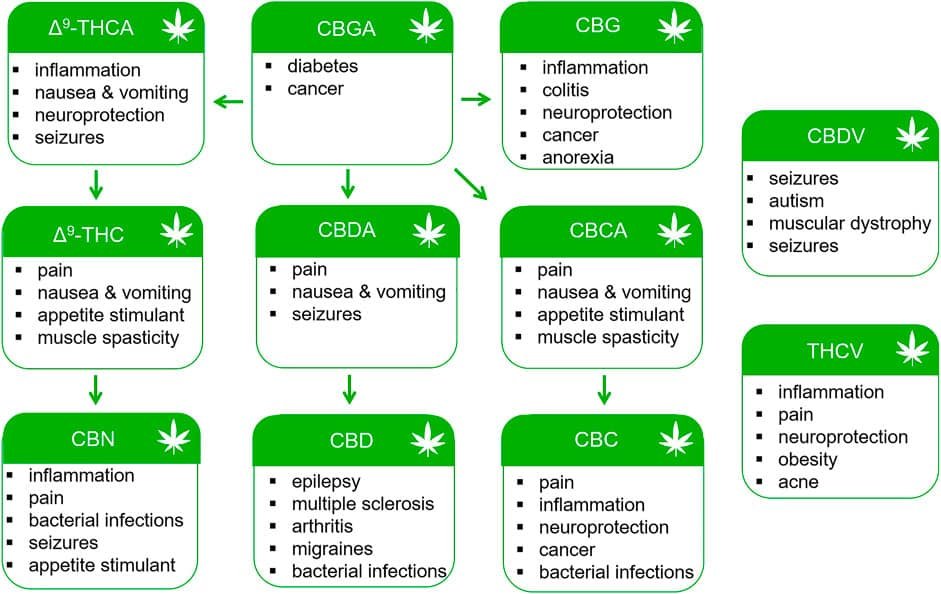
Cannabinoid | What It Is | How It Works | Key Differences | Potential Benefits* |
CBG (Cannabigerol) | Also known as the “mother cannabinoid” –it’s the precursor to other cannabinoids | Interacts with both CB1 and CB2 receptors, plus serotonin and adrenergic receptors | Non-intoxicating, often called the building block of other cannabinoids | Antibacterial properties, neuroprotection, appetite stimulation, anti-inflammatory effects |
CBN (Cannabinol) | Produced from the degradation of THC through oxidation and heat exposure | Mildly psychoactive, binds to CB1 and CB2 receptors but with lower efficacy than THC | About 25% as potent as THC, found in higher concentrations in aged cannabis | Sleep promotion, sedative effects, pain relief, appetite stimulation |
CBC (Cannabichromene) | Non-intoxicating cannabinoid derived from Cannabigerolic Acid (CBGA) | Acts on CB2 receptors and Transient Receptor Potential channels involved in pain and inflammation | No psychoactive effects, works synergistically with other cannabinoids | Anti-inflammatory, antibacterial, antidepressant effects, potential acne treatment |
THCV (Tetrahydrocannabivarin) | Structural analog of THC with shorter propyl chain | More therapeutic effects and low psychoactive effects | Appetite suppressing rather than stimulating, clear-headed effects | Weight management, diabetes support, anti-inflammatory properties |
Other (THCB, CBDa, etc.) | Various acidic and neutral forms of cannabinoid compounds including precursor compounds | Diverse mechanisms of interacting with body including enzyme inhibition and receptor modulation | Many retain properties of parent compounds or offer unique profiles | Antioxidant properties, potential therapeutic applications under research |
Why Are Minor Cannabinoids Important?
In the Cannabis industry, minor cannabinoids are targeted for their therapeutic effects, particularly those benefits that major cannabinoids cannot provide alone. By carefully including these cannabinoids, manufacturers can offer more personalized wellness approaches.
Minor cannabinoids can enhance overall therapeutic benefits, working synergistically with major cannabinoids through the “entourage effect.”
These compounds make products possible, allowing consumers specific outcomes without strong psychoactive effects.
Research suggests minor cannabinoids can address conditions that don’t respond well to traditional THC or CBD treatments.
Minor Cannabinoids vs. Terpenes
Minor cannabinoids should not be confused with terpenes. While present in trace amounts, these cannabinoids can still directly interact with the body’s endocannabinoid system, producing therapeutic effects.
Terpenes are aromatic compounds that add flavor and scent to cannabis plants. They can potentially modulate cannabinoid effects with their own subtle therapeutic properties, but not by interacting with the ECS.
Where Can You Find Minor Cannabinoids?

Minor cannabinoids occur naturally in small amounts, but you can find them in:
- Hemp and cannabis plants (raw form).
- Extracts and isolates (CBG oils, CBN tinctures, THCV edibles).
- Full-spectrum products that combine multiple cannabinoids for a broader effect.
With advancements in cannabis processing, these cannabinoids are becoming more available in wellness products.
Conclusion
Minor cannabinoids can be considered the next frontier in cannabis science. These compounds offer new targeted therapeutics and benefits that complement the well-known effects of THC and CBD.
With more research, their unique properties and potential applications are becoming more evident. Understanding what minor cannabinoids are is becoming essential for anyone interested in the full therapeutic spectrum of cannabis. From CBG’s neuroprotective qualities to CBN’s sleep-promoting effects, minor cannabinoids have the potential to transform how we approach cannabis-based wellness.

